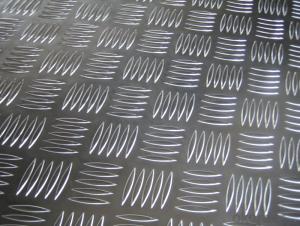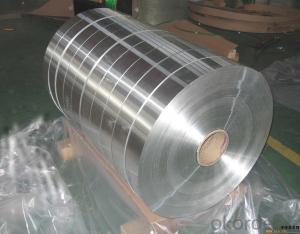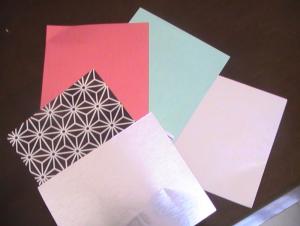Painted Aluminum Sheets for Autocar Application in Calgary
- Loading Port:
- Shanghai
- Payment Terms:
- TT OR LC
- Min Order Qty:
- 5 m.t.
- Supply Capability:
- 1000 m.t./month
OKorder Service Pledge
OKorder Financial Service
You Might Also Like
Specification
Structure of Aluminium Profile for Autocar Application Description:
Coated aluminum coil/sheet are of a wide range of colors, which gives wonderful appearance no matter in residential and commercial constructions of great exhibition centers.
The coated aluminum coil/sheet have been widely used in the fields of construction and decoration( garage doors, ceiling etc.), electronic appliances, lighting decoration, air-condition air pipes, sandwich panels and drainages etc.
Main Features of the Aluminium Profile for Autocar Application:
1) High flexibility
2) Impact resistance
3) Excellent weather-proof durability
4) Anti-ultraviolet
5) High erosion resist
Images of Aluminium Profile for Autocar Application:



Aluminium Profile for Autocar Application Specification:
Alloy | A1100,A3003,A1050,A8011 etc |
Temper | H16,H18,H24 |
Thickness | From 0.024mm to 1.2mm |
Width | Standard width:1240mm |
Special width:1300mm,1520mm,1570mm,1595mm | |
Diameter | Standard dia:1200mm |
Interior dia:150mm,405mm,505mm | |
Weight | 2.5 T/coil,3.0 T/coil |
Coating | PE, PVDF, AC |
Surface | Embossed, mill finish, coated |
Color | AS to code RAL |
Gloss | 10-90%(EN ISO-2813:1994) |
Coating Thickness | PE: more than 18 micron |
PVDF: more than 25 micron | |
Coating Hardness (pencil resistance) | More than 2h |
Coating adhesion | 5J(EN ISO-2409:1994) |
Impact Resistance | No peeling or cracking(50 kg/cm,ASTMD-2794:1993) |
Flexibility (T-bend) | 2T |
MEK resistance | More than 100 |
FAQ:
a.What is monthly capacity
---CNBM is one stated own company and our monthly capacity is about 2000tons.
b. Now which countries do you export your goods?
---Now we export to South East Asia,Africa, North America,South America ect.
- Q: Are aluminum sheets suitable for wastewater treatment applications?
- Yes, aluminum sheets are suitable for wastewater treatment applications. Aluminum is a versatile material that offers several benefits for use in wastewater treatment processes. Firstly, aluminum sheets are highly resistant to corrosion, which is essential in the harsh and corrosive environment of wastewater treatment plants. This resistance ensures that the aluminum sheets will not deteriorate or react with the chemicals present in the wastewater, thereby maintaining their structural integrity. Additionally, aluminum sheets have excellent thermal conductivity properties, allowing for efficient heat transfer in processes like wastewater disinfection. This thermal conductivity aids in the effective removal of harmful bacteria and contaminants from the wastewater, enhancing the overall treatment process. Furthermore, aluminum sheets are lightweight yet durable, making them easy to handle and install in wastewater treatment systems. This characteristic also contributes to their cost-effectiveness, as they require less maintenance and are less prone to damage compared to other materials. Moreover, aluminum is a sustainable material and can be recycled, reducing the environmental impact of wastewater treatment applications. Recycling aluminum sheets can help conserve natural resources and reduce energy consumption, making it an environmentally friendly choice. In conclusion, aluminum sheets offer numerous advantages for wastewater treatment applications. Their corrosion resistance, thermal conductivity, lightweight nature, and recyclability make them a suitable and efficient material for use in wastewater treatment processes.
- Q: Are aluminum sheets suitable for use in food processing or packaging industries?
- Aluminum sheets are indeed appropriate for utilization in the food processing and packaging sectors. The food industry extensively employs aluminum due to its exceptional properties and advantages. To begin with, aluminum is a safe material for direct contact with food as it is non-toxic. It does not react with food or affect its taste, guaranteeing the preservation of the original flavor and quality. This is particularly crucial in packaging, as it aids in maintaining the freshness and integrity of the food product. Moreover, aluminum possesses excellent thermal conductivity, enabling efficient and uniform heat distribution during food processing. This attribute is advantageous in cooking, baking, and other thermal procedures, ensuring that food is cooked or processed evenly. Additionally, aluminum sheets exhibit outstanding barrier properties, including resistance to moisture, light, and gases. This shields food from external factors that could potentially degrade its quality, such as moisture or oxygen. It also extends the shelf life of packaged food products. Furthermore, aluminum sheets are lightweight, yet sturdy and durable. This makes them easy to handle and transport in food processing and packaging operations. Their strength and durability ensure that the packaging remains intact and safeguards the food during transportation and storage. Lastly, aluminum is an environmentally sustainable material. It is fully recyclable, meaning it can be reused without losing its properties. This aids in reducing the environmental impact and supports the concept of a circular economy. In conclusion, aluminum sheets are highly suitable for use in the food processing and packaging industries. Their non-toxic nature, thermal conductivity, barrier properties, lightweight yet strong characteristics, and sustainability make them an ideal choice for ensuring the safety and quality of food products.
- Q: What are the various color and pattern options for aluminum sheets?
- <p>Aluminum sheets are available in a wide range of colors and patterns to suit various applications and aesthetic preferences. Colors can include silver, white, black, bronze, and many other shades. Patterns can range from simple matte or gloss finishes to more complex textures like wood grain, stone, and brushed metal effects. Some aluminum sheets also feature anodized finishes for enhanced durability and color vibrancy. Custom colors and patterns can be created through specialized coating processes, allowing for a high level of personalization in design and construction projects.</p>
- Q: Does aluminum sheet require special handling during transportation?
- Yes, aluminum sheet does require special handling during transportation. This is because aluminum sheets are lightweight and can be easily damaged if not handled properly. Special precautions need to be taken to prevent scratching, bending, or denting of the sheets. They should be packaged and secured in a way that minimizes movement and provides adequate protection against impacts. Additionally, aluminum sheets should be transported separately from other heavy objects or materials to avoid any potential damage caused by their weight. Overall, special care and attention must be given to ensure the safe transportation of aluminum sheets.
- Q: What is the melting point of aluminum sheets?
- The melting point of aluminum sheets is approximately 660 degrees Celsius or 1220 degrees Fahrenheit.
- Q: how to produce aluminium sheet circle?
- As for the process, you can use punch.. as for professional machines, for example, stationary press in open type, mechanical press/ single-point press. The material you say is neither big nor small, blanking…(cutting them into sheet circle you want) you can add an uncoiling if it’s coil stock: open-type inclinable press, four-point press,ect. It’s not certainly accurate) punch, oil press, double , four-column hydraulic (oil) press,etc. it needs about 315T,(estimated value, closed type single, blank material cutting (cutting into square ) 2, it contains sheet metal forming technology, crank press: 1: straight side two : 1, but the components you said is simple, only two steps.
- Q: or aluminum ? and what other gases are released?
- Aluminium does not normally react with water because of a surface coating of the highly unreactive Al2O3 that forms on exposure to atmospheric oxygen. In the presence of strong base, however, this compound dissolves due to complexation by hydroxide, similarly to how silver chloride dissolves in ammonia. Al2O3(s) + 2OH-(aq) + 3H2O(l) ----- 2[Al(OH)4]-(aq) Once this has occured, aluminium metal, a very strong reducing agent, is exposed to water. 2Al(s) + 6H+(aq) ----- 2Al3+(aq) + 3H2(g) Even though the solution is alkaline, there is still a low concentration of H+ formed by the autoprotolytic dissociation of water. The Al3+ formed then reacts with hydroxide to produce more [Al(OH)4]-. Yes, the hydrogen gas is from the water.
- Q: What are the weight considerations when using aluminum sheets?
- Weight considerations play a significant role in various applications and industries when utilizing aluminum sheets. Aluminum's lightweight nature makes it a preferred choice in scenarios where weight reduction is essential. Here are some key factors to consider regarding weight when using aluminum sheets: 1. Structural Weight Reduction: Industries such as aerospace, automotive, and construction commonly use aluminum sheets to reduce the overall weight of structures. Aluminum's lightweight nature allows for improved fuel efficiency in vehicles, increased payload capacity, and lower transportation costs for construction materials. 2. Design Flexibility: Aluminum sheets offer greater design flexibility compared to heavier materials due to their low density. This weight advantage enables engineers and designers to create intricate shapes and structures without compromising on strength and durability. 3. Handling and Installation: The lightweight nature of aluminum sheets simplifies handling and installation processes. It requires fewer manpower and equipment, reducing labor costs and increasing productivity. Additionally, aluminum's low weight makes it easier to transport and maneuver during assembly or installation. 4. Corrosion Resistance: Aluminum naturally forms a protective oxide layer, making it highly resistant to corrosion. This eliminates the need for additional coatings or treatments, reducing weight and maintenance requirements. 5. Energy Efficiency: Using aluminum sheets can help reduce energy consumption in various applications. For instance, lightweight aluminum roofing in the construction industry can improve the energy efficiency of buildings by reducing the load on heating and cooling systems. 6. Transport and Shipping: Aluminum's lightweight property significantly impacts transportation and shipping costs. The reduced weight of aluminum sheets allows for larger quantities to be transported in a single shipment, thereby reducing fuel consumption and emissions. 7. Electrical Applications: Aluminum is an excellent conductor of electricity. Its lightweight nature makes it an ideal choice for electrical wiring, conductors, and other electrical components, reducing the overall weight of electrical systems. It is important to note that while weight reduction is advantageous in many applications, the specific requirements and constraints of each project should be considered. Proper engineering analysis and consultation are crucial to ensure that the selected aluminum sheet meets the desired weight considerations while maintaining structural integrity and performance.
- Q: What types of bonds can aluminum form: Covalent, Ionic and/or Metallic?Could you post the source, I've been looking for a while now :/
- I have considerable experience with adhesives of all types and for your project would suggest either 3M's Scotch Weld DP 420 or Loctite's Epoxy Weld bonding compound. Both are two part formulas and are good for bonding aluminum. Hope that helps.
- Q: Can 101 aluminum sheets be used in food storage containers?
- Yes, 101 aluminum sheets can be used in food storage containers.
Send your message to us
Painted Aluminum Sheets for Autocar Application in Calgary
- Loading Port:
- Shanghai
- Payment Terms:
- TT OR LC
- Min Order Qty:
- 5 m.t.
- Supply Capability:
- 1000 m.t./month
OKorder Service Pledge
OKorder Financial Service
Similar products
Hot products
Hot Searches
Related keywords




























